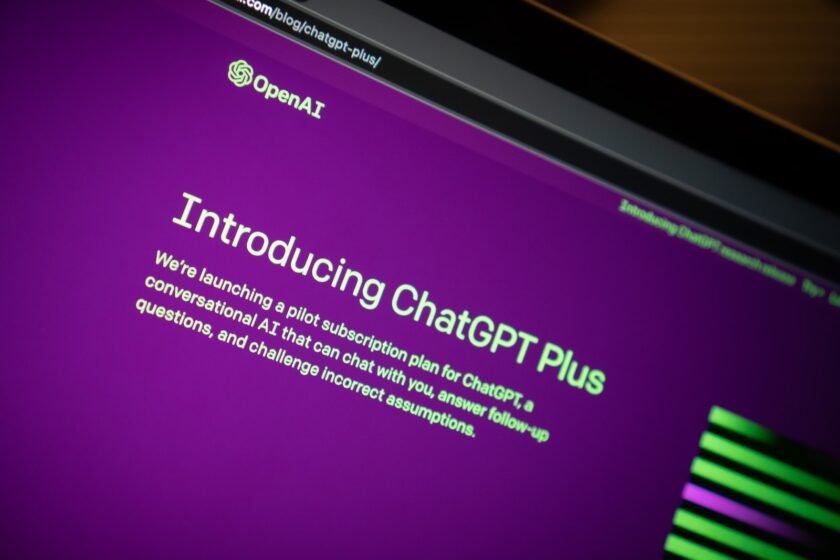ChatGPT is a powerful language model developed by OpenAI. As a machine learning model, ChatGPT is designed to understand human language and generate responses to natural language inputs. This has made it an important tool for a wide range of use cases in various industries.
In this article, we will explore some of the most common use cases of ChatGPT and how it is being used to solve real-world problems.
1.Customer Support
One of the most popular use cases of ChatGPT is customer support. Many companies have implemented ChatGPT to provide round-the-clock support to their customers. ChatGPT can quickly answer customer queries, provide troubleshooting assistance, and even help customers with their purchase decisions.
For instance, when a customer contacts a company’s customer support team, they are typically directed to an automated chatbot. The chatbot uses ChatGPT to generate responses based on the customer’s queries. These responses are usually very accurate and helpful, and customers can get the answers they need quickly and easily.
ChatGPT can also be used to help customers make purchasing decisions. For instance, a customer might be unsure which product to buy or have questions about a product’s features. ChatGPT can help answer these questions and even recommend products based on the customer’s needs and preferences.
2.Content Creation
Another important use case of ChatGPT is content creation. ChatGPT can generate high-quality content on a wide range of topics, including news, sports, science, and technology. This makes it a useful tool for content creators, marketers, and journalists.
For instance, a journalist might use ChatGPT to generate news articles on a specific topic. The journalist can provide ChatGPT with some background information and keywords related to the topic, and ChatGPT can generate an article based on this information.
Similarly, marketers can use ChatGPT to generate marketing copy for products and services. ChatGPT can generate high-quality product descriptions, marketing emails, and social media posts. This can save marketers a lot of time and effort, allowing them to focus on other important tasks.
3. Language Translation
ChatGPT is also being used for language translation. ChatGPT can translate text from one language to another quickly and accurately. This makes it a useful tool for companies and organizations that operate in multiple countries and need to communicate with customers and partners in different languages.
For instance, a company that operates in both English-speaking and Spanish-speaking countries might use ChatGPT to translate customer queries and support tickets from Spanish to English (or vice versa). This can help the company provide better support to its customers and improve customer satisfaction.
ChatGPT can also be used for real-time language translation. For instance, a person might use ChatGPT to communicate with someone who speaks a different language in real-time. This can be especially useful for travelers who need to communicate with people who speak a different language.
4.Personal Assistance
ChatGPT can also be used as a personal assistant. ChatGPT can help people manage their schedules, set reminders, and even order food or book a ride. This makes it a useful tool for busy professionals and individuals who want to save time and be more productive.
For instance, a busy professional might use ChatGPT to manage their schedule and set reminders for important meetings and appointments. ChatGPT can also help them find available meeting times that work for everyone on their team.
Similarly, an individual might use ChatGPT to order food or book a ride. ChatGPT can quickly find nearby restaurants or ride-sharing services and even place orders or make reservations on behalf of the user.
5.Education
ChatGPT can also be used in the education sector to provide students with personalized learning experiences. ChatGPT can be used to generate quizzes, tests, and other learning materials that are tailored to a student’s individual needs and learning style.
For instance, a teacher might use ChatGPT to generate quizzes and tests for their students. ChatGPT can generate questions based on the topics the students are studying and their individual learning needs. This can help teachers identify areas where students need more help and provide them with targeted support.
ChatGPT can also be used to create chatbots that can answer students’ questions and provide them with additional learning resources. These chatbots can help students learn at their own pace and provide them with immediate feedback on their progress.
6.Mental Health Support
ChatGPT can also be used for mental health support. ChatGPT can be used to provide support to individuals who are struggling with mental health issues such as anxiety and depression. ChatGPT can generate responses that are empathetic and supportive, and provide users with resources and referrals to professional help if needed.
For instance, a mental health organization might use ChatGPT to provide support to individuals who are struggling with anxiety. ChatGPT can generate responses that provide users with coping strategies, relaxation techniques, and other resources that can help them manage their anxiety.
ChatGPT can also be used to provide support to individuals who are experiencing suicidal thoughts. ChatGPT can provide users with resources and referrals to professional help, such as suicide prevention hotlines and mental health clinics.
7.Research
ChatGPT can also be used for research purposes. ChatGPT can be used to generate summaries of research papers and articles, and even generate new research questions based on existing research. This can save researchers a lot of time and effort, allowing them to focus on other important aspects of their research.
For instance, a researcher might use ChatGPT to generate summaries of research papers related to their area of study. ChatGPT can quickly scan through the paper and generate a summary that captures the key points of the paper.
Similarly, a researcher might use ChatGPT to generate new research questions based on existing research. ChatGPT can analyze existing research papers and generate new research questions that build on the existing research. This can help researchers identify new areas of study and make important contributions to their field.
Conclusion
ChatGPT is a powerful tool that can be used in a wide range of industries and applications. From customer support to education to mental health support, ChatGPT is being used to solve real-world problems and make people’s lives easier and more productive. As more industries and organizations adopt ChatGPT, we can expect to see even more innovative and impactful use cases in the future.

As an architecture and interior designer, I am passionate about creating spaces that inspire and delight those who inhabit them. With over a decade of experience in the industry, I have honed my skills in both the technical aspects of design and the art of crafting beautiful, functional spaces.
After earning my degree in architecture, I began my career working for a prestigious firm where I was exposed to a wide range of projects, from commercial buildings to high-end residential properties. During this time, I developed a keen eye for detail and a deep appreciation for the importance of form and function in design.
In recent years, I have struck out on my own, founding my own design studio where I have been able to further explore my passion for interior design. I believe that a well-designed space can transform the way people live and work, and I take pride in working closely with clients to understand their needs and create spaces that exceed their expectations.
Throughout my career, I have been recognized for my innovative and creative approach to design, and have been honored with a number of awards and accolades. When I’m not working on design projects, you can find me exploring the outdoors or seeking inspiration in the world around me.


